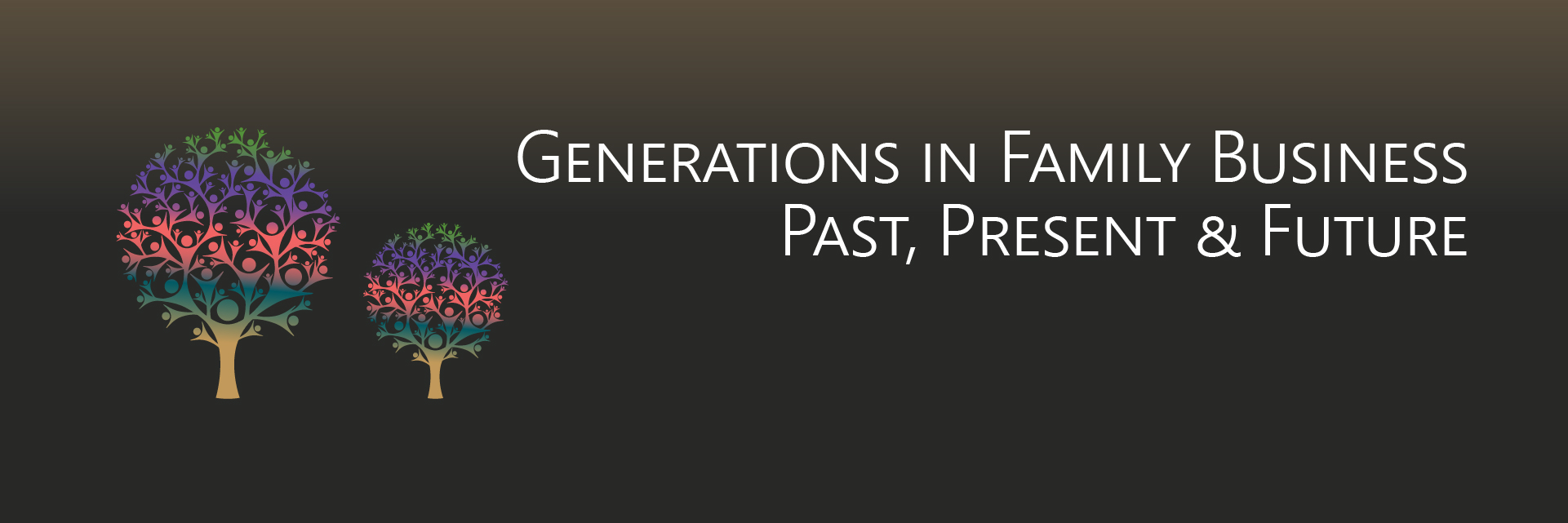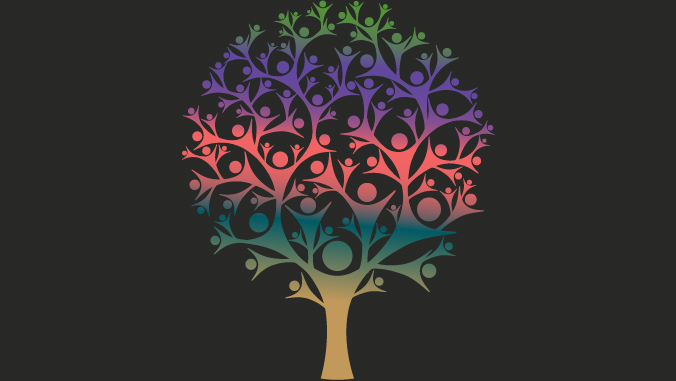
Human Resource Management Diagnostic Model: Developing Human Resources
- Published
- Jun 7, 2019
- Share
In this episode, Matt Kerzner and Tim Schuster have a high-level discussion regarding Developing Human Resources and using the Human Resources Diagnostic Model to positively impact your ability to develop great talent to your firm.
Transcript
Tim Schuster: Welcome to our podcast for “Generations And Family Business, Past, Present, and Future.” Our host for this podcast is myself, Tim Schuster, and I'm a manager in The Center For Family Business Excellence, and as always …
Matt Kerzner: it's Matt Kerzner. I'm a senior manager for The Center For Family Business Excellence.
Tim Schuster: Matt, good to see you here today.
Matt Kerzner: You as well. Tim, thanks for being who you are.
Tim Schuster: I appreciate it as always my friend. For the last podcast, as a reminder to our listeners, we were talking about the diagnostic model and rewarding HR functions. This one we're going to be doing a little bit more of a deep dive on developing the HR function. So, Matt, why don't you tell our listeners a little bit about developing the HR function.
Matt Kerzner: And just for clarity, Tim, it's developing the human resources, right? Developing our people, developing our resources to maximize our potential in the workplace. Last time we talked about how you hire and acquire human resources. And then we talked about how you recognize, set that expectation, monitor and give feedback for, improvement or feedback for recognition. So this is building off of that. Once you have the talent and you start giving feedback, you want to make sure that they're growing, right? The organization has specific needs for a skilled workforce, but the employees also have this need to have purpose in their jobs. So it's really important for organizations to spend quality time, resources and capital to invest in their employees. It's critical to do that. And there are many different ways to for an employee to develop in the workplace.
Tim Schuster: So how do you do that? A phenomenal question.
Matt Kerzner: The first one is there's nothing more powerful than working with an employee to have him/her create their own individual developmental plan. We ask those questions during the performance reviews. You don't even like the word performance reviews. How about performance or just discussions.
Tim Schuster: Just performance check-ins.
Matt Kerzner: It should be really informal, I call them informal coffee talks where you have a conversation and the employee starts saying this is what I want to do. These are the goals that I want to work on both professionally and personally, and then working with their manager and putting this plan together. What are the formal classes they can take? Who are the people that can be mentored, both formally and informally? How do you develop this path to progression where in the next three years these are some major milestones? I always caution, don't take the superhighway, take the back road and actually learn the job. The individual developmental plan can help connect the dots to learn what you need to learn on that path of progression. Another one is when you do a performance check-in and you start talking about your strengths and areas that you need to improve upon. It's really honing in on those areas of improvement.
Tim Schuster: Exactly.
Matt Kerzner: And then finding out what those gaps are and finding different, diverse ways of getting the skills that you need. Again, formal training, informal discussions with people that have the skillsets, like an informal mentor. In-the-job training is by far the best experience. The best thing that a manager or a leader of an organization can do is say, “Tim, it's okay to make a mistake because you actually learn so much more from making mistakes and learning from them.” So part of the on-the-job training is allowing people to make some mistakes and then learning from those mistakes.
Tim Schuster: You know what’s also good about that is the ability to get closer as a connection. Like if you're my manager and I'm your subordinate and we're going through this process and say, hey Matt, hey Tim, what are your strengths? What are your weaknesses? And acknowledging those weaknesses and us coming together and having that better connection will make us a more cohesive unit, too.
Matt Kerzner: Absolutely. I actually do an activity with my clients when we're talking about developing their workforce. And I use an exercise called keep doing, start doing, and stop doing. And it's a really simple exercise to figure out what gaps are out there and what training is needed. So what I do is I'll say, Tim, what is something that you do really well and what do you want to continue doing? So here's the question, what do you do really well, Tim? One behavior that you do really well.
Tim Schuster: I love these podcasts.
Matt Kerzner: So I would say one of your super strengths is your verbal communication. So absolutely the more Tim can get in front of people and develop his skills by doing verbal communication, keep doing that. So that's the keep doing. So now let's stay on the theme of communication. What is something that you're not doing in the area of communication that you could be doing better?
Tim Schuster: Talking about me from a daytime perspective, at least, we had recent tax reforms, as there are new rules and regulations being put out there is staying on top of them. So that's something that can always be doing and improving based on the fact that Congress still is trying to get its act together on it.
Matt Kerzner: That's perfect. So with that start doing, right, this is the gap analysis and the on-the-job training and possibly mentorship. What do you need to do in order to start that activity?
Tim Schuster: Exactly. So what I would do in that instance is subscribe to RSS feeds as there are things coming through, as the firm's putting out communications. There might be people who are hearing things and not actually having conversations with other members of the firm. Why? Because how I'm interpreting things versus how other people are interpreting things might be two different ways of interpreting a rule. So it's having that communication with other accountants and just keeping in the loop as to what's going on in the world. Having a pulse on that because that's going to differentiate us versus another firms.
Matt Kerzner: That's great. And then the last one here is what are you doing that's actually getting in your way of being a better communicator that you need to stop doing?
Tim Shuster: Ah, okay. So that could be taking on too much. So if I'm in the middle of trying to handle five different clients at one time, it's like, oh my gosh, how do I figure out how to prioritize one over the other? Especially if you have five people asking you for something right now. So it's kind of going through that process and say, okay, let's prioritize what I need to do in the next hour; maybe the next four hours; maybe by the end of the day today. And that could be a way to help with communication with clients and just making sure everyone is happy with the service that we're providing.
Matt Kerzner: So this simple exercise of keep doing, start doing, and stop doing with every employee, right? And this is not like this big thing. This is like over coffee, and employees can do a self-evaluation of this activity, work with their supervisor, and then it could cascade up through the company. So now you have a list of all the employees, all the things that they want to keep doing, start doing stop doing. You could do a simple gap analysis and figure out what areas people need to be working on. And that right there could be your 2019 plan for developing your human resources. How many people have the super strengths that could mentor others? How many people need to start something? These are lunch and learns. These are formal training activities. And then they stop doing, I call it the money shot is that is where the supervisors can work with the employees over a cup of coffee to say how are you doing in these areas. Did you stop those behaviors?
Tim Schuster: Yes. Are you working on this? And then have the check-ins. I mean that's the big thing, right? Hold people accountable and say these are our goals as an organization. Your personal goals or organizational goals—are you having the check-ins and making sure you're keeping up with them? Accountability is half the battle.
Matt Kerzner: That's right. Those are great activities. It's a very powerful, but simple tool to help develop human resources.
Tim Schuster: Is there a way, Matt, to link this back to the strategic roadmap?
Matt Kerzner: Absolutely. With the strategic roadmap, we talked about the mission, vision, and the values of the organization. What are the major goals of the organization? So when you have these major goals that you're trying to get everybody rowing in the right direction, well, obviously you have to make sure you have a solid workforce that has the skills to get you to where you have to go. So when we talk about growing the business, operating efficiency, then we're talking about people development. We have to remember our most important asset to an organization is what Tim?
Tim Schuster: Its people.
Matt Kerzner: You got it. So spend the quality time developing your human resources and watch the magic happen.
Tim Schuster: I love it. I think that's great. Matt, thanks again as always for being here today. And thank you for listening to “Generations and Family Business Past, Present, and Future” as part of the EisnerAmper podcast series. If you have any questions or there is a topic you'd like us to cover, email us at, contact@eisneramper.com. Visit eisneramper.com for more information on this and a host of other topics. We look forward to having you listen to our next EisnerAmper podcast.
Also Available On
More in this Series

Human Resource Management Diagnostic Model

Human Resource Management Diagnostic Model: Rewarding & Recognizing Talent

Human Resource Management Diagnostic Model: Maintaining Human Resources

Human Resource Management Diagnostic Model: Attracting Talent

Human Resource Management Diagnostic Model: Human Resource Processes

Human Resource Management Diagnostic Model: External/Internal Environmental Influences
What's on Your Mind?
Start a conversation with Timothy
Receive the latest business insights, analysis, and perspectives from EisnerAmper professionals.












